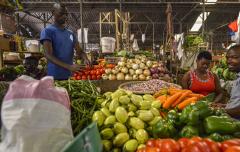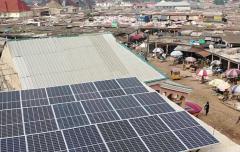“We feel a more explicit focus is needed for financing and better policies for decentralized renewable energy”: Partner spotlight interview with Tom Derksen, Energy Managing Director at SNV
In an interview with Tom Derksen, Energy Managing Director at SNV, we discuss their work on SDG 7, the opportunity of decentralized renewable energy and how energy supports successful development solutions.
What is SNV’s mission?
SNV’s mission is to make a lasting difference in the lives of millions of people living in poverty.
By sharing our specialist expertise in Agriculture, Energy and Water, Sanitation and Hygiene, we contribute to solving some of the leading problems facing the world today – helping to find local solutions to global challenges and sowing the seeds of lasting change. We recognize that sustained poverty reduction requires people living in poverty to both contribute to and benefit from growth while having access to quality basic services. With this in mind, our work focuses on enabling the four factors we have learnt are essential for successful development: inclusive development, systemic change, local ownership, and contextualized solutions.
How does SNV support Sustainable Development Goal 7 (SDG7)?
SNV’s energy team develops sustainable energy markets that bring decentralized renewable energy solutions to communities in last mile rural locations. Over a period of 3 years SNV aims to have brought energy access and clean cooking solutions to 2.1m people (by end 2018).
An example of this would be our Results-Based Financing (RBF) for Pico-Solar Market Development project in Tanzania which we are implementing in collaboration with our partners Energizing Development (EnDev) and the United Kingdom Department of International Development.
The objective of this project is to provide access to clean solar energy for 360,000 rural Tanzanians. So far, 320,000 people have been reached and almost 800 solar related jobs have been created for the local community.
What do you see as the priority areas of SDG7 to help us meet 2030 targets?
We feel a more explicit focus is needed for financing and better policies for decentralized renewable energy (off-grid solutions) which are rapidly becoming the most competitive option for underserved communities. The second issue that urgently needs to be addressed is the current serious underfunding of ‘clean cooking’ market development.
The SDGs pledge to leave no one behind, but that is exactly where the problem lies: money mainly flows to large, on-grid energy production, and the energy does not reach the poorest communities in remote, rural areas in developing countries. Also, as mentioned above financial commitments for clean cooking are still extremely low and insufficient.
To illustrate this, in 2014 there was a $4.4 billion estimated annual investment needed for cooking projects, but only $32 million committed (0.72%). By comparison, in the same year, the average annual commitment for electricity projects was $19.4 billion while the sector needed $45 billion in total (43.11%).
What does your partnership with SEforALL focus on?
The lack of access to solar energy across rural areas in the developing world prompted SNV to launch a Call to Action to ignite solar markets, at the Vienna Energy Forum 2017 with the aim of providing 5m people with solar entry solutions in 5 countries in 5 years.
To advance this Call to Action, SNV and SEforALL became delivery partners which the goal of working together to enhance energy access and develop an enabling market environment for last mile-distribution of solar powered products in Africa. We also aim to support the shaping of solar markets through appropriate policy and regulatory consultations and collaborate on the unlocking of finance to increase diffusion of entry-level off-grid solar products. Since the Call to Action was launched, we have actually reached 500k people with entry level tier 1 and tier 2 solar products.
2018 is a busy year for sustainable energy. What is SNV looking forward to?
We look forward demonstrating how climate change can be effectively addressed by integrating agriculture and energy solutions. Cross-sector solutions are more commercially viable. For example, a mini-grid in Zimbabwe is only viable if it works with household energy consumers and agriculture processors and irrigation providers.
The effectiveness of climate change action in the agricultural sector can be enhanced if changes go beyond the production level only, and also focus on increases in the use of ‘renewable energy’ and ‘energy efficiencies’ at farm, transport, storage and processing level. In this context, we’ll continue to promote the productive use of energy for agriculture purposes. A good example is our biogas project in Nicaragua where the biogas produced operates milking machines and the waste is used to produce bio-slurry to fertilize the land.
Finally, we will expand the use of result-based finance (RBF) models that have shown to be effective ways to catalyze renewable energy markets. RBF mechanisms can help to bring markets to scale while effectively leveraging private finance. In 2017, SNV’s RBF projects leveraged 15m in private investment.
Follow SNV on Twitter at @SNV_RE



